A collection of videos relating to the diagnosis and treatment of eye movement disorders. This collection includes many demonstrations of examination techniques.
Dan Gold, D.O., Associate Professor of Neurology, Ophthalmology, Neurosurgery, Otolaryngology - Head & Neck Surgery, Emergency Medicine, and Medicine, The Johns Hopkins School of Medicine.
A collection of videos relating to the diagnosis and treatment of eye movement disorders.
NOVEL: https://novel.utah.edu/
TO
| Title | Description | Type | ||
|---|---|---|---|---|
| 126 |
 |
The Gans Maneuver for Right Posterior Canal Benign Paroxysmal Positional Vertigo (Video) | This maneuver is recommended for individuals with cervical restrictions or precautions, as the maneuver avoids cervical hyperextension and may reduce cervical pain associated with repositioning maneuvers. The Epley maneuver has higher subjective and objective success rates compared to the Gans maneu... | Image/MovingImage |
| 127 |
 |
Paroxysmal Ocular Tilt Reaction | 𝗢𝗿𝗶𝗴𝗶𝗻𝗮𝗹 𝗗𝗲𝘀𝗰𝗿𝗶𝗽𝘁𝗶𝗼𝗻: This is a 60-year-old woman who 2 years prior experienced a left sided hypertensive hemorrhagic stroke, resulting in right hemiparesis, dysarthria and vertical diplopia. The initial vertical diplopia resolved completely a... | Image/MovingImage |
| 128 |
 |
Pontine Hemorrhage Causing Oculopalatal Tremor and Multiple Cranial Neuropathies | This is a 45-yo-woman who had a dorsal pontine cavernoma that bled 2 years prior to this video. Symptoms included diplopia and oscillopsia. On examination, she had left>right facial palsies (upper and lower face from involvement of the nucleus/fascicle - i.e., lower motor neuron palsies) and sixth n... | Image/MovingImage |
| 129 |
 |
PSP with Vertical Gaze Palsy, Abnormal Optokinetic Nystagmus and Inability to Suppress Blinking to Light | 𝗢𝗿𝗶𝗴𝗶𝗻𝗮𝗹 𝗗𝗲𝘀𝗰𝗿𝗶𝗽𝘁𝗶𝗼𝗻: This is a 75-year-old woman with a diagnosis of progressive supranuclear palsy (PSP). Examination demonstrated vertical supranuclear gaze palsy (i.e., it could be overcome by the vertical vestibulo-ocular reflex [VOR]), s... | Image/MovingImage |
| 130 |
 |
Right Dix Hallpike Test (Video) | The Dix-Hallpike tests for benign paroxysmal positional vertigo (BPPV). A test is positive when a patient reports vertigo, dizziness, or sensation of movement or falling with nystagmus present. When the head is in this position, it allows the posterior canal to be aligned with the gravitational vect... | Image/MovingImage |
| 131 |
 |
Right Half Hallpike Test (Video) | The Half Hallpike Test compliments the Dix Hallpike Test and is traditionally used to assist with the diagnosis of posterior canal-benign paroxysmal positional vertigo (BC-BPPV), cupulolithiasis, as it may produce a greater degree of deflection under the action of gravity without latency when the o... | Image/MovingImage |
| 132 |
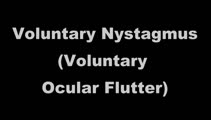 |
Voluntary Ocular Flutter | 𝗢𝗿𝗶𝗴𝗶𝗻𝗮𝗹 𝗗𝗲𝘀𝗰𝗿𝗶𝗽𝘁𝗶𝗼𝗻: This is a 45-yo-man with intermittent complaints of horizontal oscillopsia for 1 year. On examination, all classes of eye movements were normal, and neurologic examination was normal. MRI of the brain had been performed p... | Image/MovingImage |
| 133 |
 |
The Acute Vestibular Syndrome with Skew Deviation, Gaze-evoked Nystagmus, and Bilaterally Abnormal Head Impulse Testing Due to AICA Stroke | This is a 60-year-old man with the acute onset of prolonged vertigo and nystagmus, consistent with the acute vestibular syndrome (AVS). HINTS (Head Impulse, Nystagmus, Test of Skew) exam demonstrated a central pattern: 1) Head impulse test (HIT) was abnormal to the right and to the left. An abnormal... | Image/MovingImage |
| 134 |
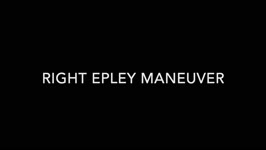 |
The Canalith Repositioning Maneuver/Epley Maneuver for Right Posterior Canal Benign Paroxysmal Positional Vertigo (Video) | Posterior canal (PC) accounts for 70-90% cases of BPPV [1-3] and resolves with canalith repositioning maneuvers 90% of the time [4-20]. The Epley maneuver is considered a gold-standard treatment, with class 1 evidence for use. | Image/MovingImage |
| 135 |
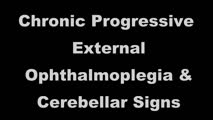 |
Chronic Progressive External Ophthalmoplegia (CPEO) and Cerebellar Signs | This is a 60-yo-woman who initially presented with imbalance and ophthalmoparesis. Initially, there was mild horizontal gaze limitation with mild gaze-evoked nystagmus and slow saccades, and over the years, gait ataxia and dysarthria (mainly a scanning quality to her speech) developed, and her ophth... | Image/MovingImage |
| 136 |
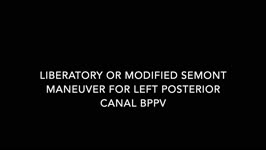 |
Liberatory or Modified Semont, Posterior Canal Benign Paroxysmal Positional Vertigo (BPPV) for Right Posterior Canal BPPV (Canalithiasis or Cupulolithiasis) | Posterior canal (PC) accounts for 70-90% cases of BPPV [1-3] and resolves with canalith repositioning maneuvers 90% of the time [4-13]. The Semont/Liberatory maneuver is considered a gold-standard treatment, with class 1 evidence for use and success rates close to 90% [4-13].The Liberatory maneuver ... | Image/MovingImage |
| 137 |
 |
Oculopalatal Tremor and Internuclear Ophthalmoplegia Due to Hemorrhagic Pontine Cavernoma | 𝗢𝗿𝗶𝗴𝗶𝗻𝗮𝗹 𝗗𝗲𝘀𝗰𝗿𝗶𝗽𝘁𝗶𝗼𝗻: This is a 60-year-old woman who experienced 2 episodes of vertigo, nausea and vomiting, which was felt to be related to recurrent hemorrhage of a pontine cavernoma that was adjacent to the fourth ventricle. The cavernoma ... | Image/MovingImage |
| 138 |
 |
The Affected-Ear-up 90 degree Maneuver (HC-Canalithiasis) (Video) | The Affected-Ear-up 90 degree Maneuver is used to treat horizontal canal-canalithaisis. 1. The patient starts in a supine position. 2. The patient rotates their head 90 degrees towards the unaffected side. 3. The patient sits up. | Image/MovingImage |
| 139 |
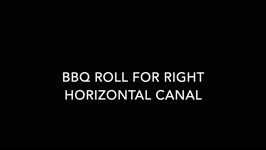 |
BBQ Roll for Right Horizontal Canal BPPV, Canalithiasis (Geotropic Nystagmus) (Video) | The BBQ Roll/Lampert Maneuver has been shown to be an effective treatment and is supported by a level I classification study. 1. The patient starts in a supine position with the head positioned 30 degrees above the horizon. 2. While maintaining head elevation, the patient's head (or whole body) is r... | Image/MovingImage |
| 140 |
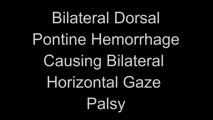 |
Bilateral Horizontal Gaze Palsy and Oculopalatal Tremor Due to Pontine Hemorrhage | This 70-yo-woman experienced headache and diplopia and was found to have a hemorrhage centrally within the dorsal pons. Months after the onset, the patient was seen in clinic and had no horizontal eye movements (pursuit, saccades, VOR) in either eye, suggestive of bilateral nuclear 6th nerve palsies... | Image/MovingImage |
| 141 |
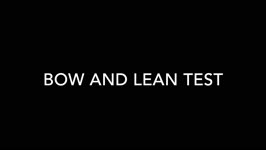 |
Bow and Lean Test (Video) | The Bow and Lean Test is used to identify the affected side and is designed to be used in conjunction with or after the Supine Roll Test. Within this test a null point may exist where the nystagmus will extinguish because the cupula is in a gravity neutral position. As this test involves the patient... | Image/MovingImage |
| 142 |
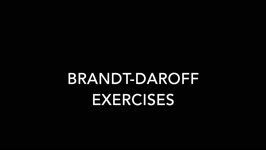 |
Brandt-Daroff Exercises (Video) | Brandt-Daroff exercises are less effective than the Epley and the Semont maneuvers and are not shown to prevent recurrence [1-3]. Brandt-Daroff exercises may still be beneficial for habituation exercises and to reduce phobic responses to lying supine or side-lying after the resolution of BPPV. This ... | Image/MovingImage |
| 143 |
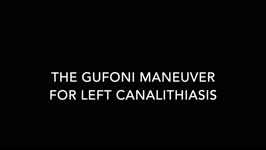 |
Gufoni Maneuver for Left Horizontal Canal BPPV, Canalithiasis (Geotropic Nystagmus) (Video) | The Gufoni maneuver may be preferable to the BBQ roll, as the Gufoni maneuver does not require the individual to roll or be in a prone position, making the maneuver more feasible to complete for individuals who are elderly, obese and/or experience immobility. Antecedently, some clinicians remember t... | Image/MovingImage |
| 144 |
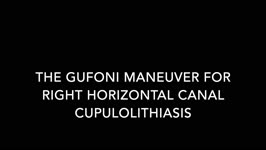 |
Gufoni Maneuver for Right Horizontal Canal-Cupulolithiasis (Apgeotropic Nystagmus) (Video) | The Gufoni Maneuver can be used to treat horizontal canal cupulolithaisis. 1. The patient starts in a seated position. 2. The patient transitions quickly to lying on their affected side. 3. The patient lies on their affected side for two minutes with the head in a neutral position. 4. The patient's ... | Image/MovingImage |
| 145 |
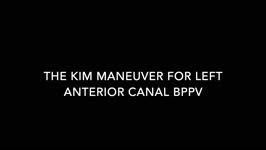 |
Kim Maneuver for Anterior Canal BPPV (Video) | The Kim Maneuver for Anterior Canal can be used to treat individuals with anterior canal BPPV. 1. The patient's head is turned 45 degrees towards the unaffected side. 2. The patient transitions into a supine position with the head hanging 30 degrees below the horizon. 3. After two minutes, the head ... | Image/MovingImage |
| 146 |
 |
The Kim Maneuver for Right Horizontal Cupulolithiasis (Video) | The Kim Maneuver is used to treat horizontal canal cupulolithiasis cases where the otoconia may be located on either side of the cupula. 1. The patient begins in a supine position. 2. The patient's head is turned 135 degrees towards the affected side and oscillation is applied to the affected side f... | Image/MovingImage |
| 147 |
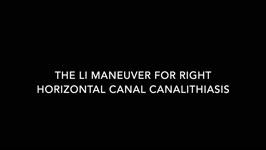 |
Li Maneuver for Geotropic Right HC-BPPV, Canalithiasis (Video) | The Li maneuver is used to treat horizontal canal, canalithiasis. When compared to the Gufoni maneuver, the Li maneuver was as effective to treat HC-BPPV and there was no significant difference between the maneuvers; however, the Li Maneuver may take less time to complete. 1. The patient starts in a... | Image/MovingImage |
| 148 |
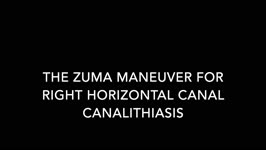 |
Modified Zuma for Right Horizontal Canal Canalithiasis (Geotropic Nystagmus) (Video) | The Modified Zuma maneuver is used to treat horizontal canal canalithiasis (geotropic nystagmus. 1. Patient begins in a seated position. 2. The patient's head is rotated 45 degrees towards the unaffected side. 3. The patient transitions to lying on their affected side and maintains this position for... | Image/MovingImage |
| 149 |
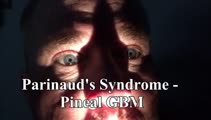 |
Parinaud's Syndrome in a Man with GBM of the Pineal Gland | 𝗢𝗿𝗶𝗴𝗶𝗻𝗮𝗹 𝗗𝗲𝘀𝗰𝗿𝗶𝗽𝘁𝗶𝗼𝗻: This is a 60-yo-man who presented with diplopia, headaches, and difficulty looking up, and was found to have a mass involving the pineal gland. Biopsy was diagnostic of a GBM. Major features of Parinaud's (dorsal midbrain... | Image/MovingImage |
| 150 |
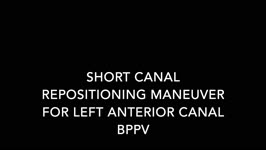 |
Short Canal Repositioning Maneuver for Anterior Canal BPPV (Video) | The Short Canal Repositioning Maneuver is used to treat anterior canal BPPV. 1. The patient's head is rotated 45-degrees towards the affected side. 2. The patient's maintains head in a 45-degree position and enters a head hanging position (40 degrees below the horizontal). 3. The patient then mainta... | Image/MovingImage |
